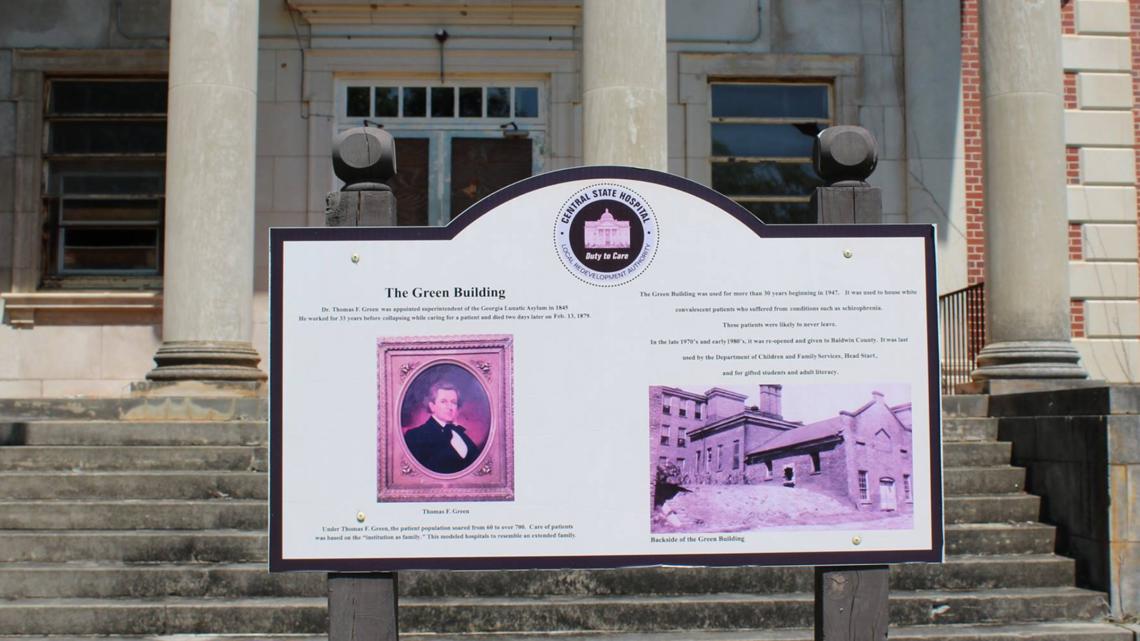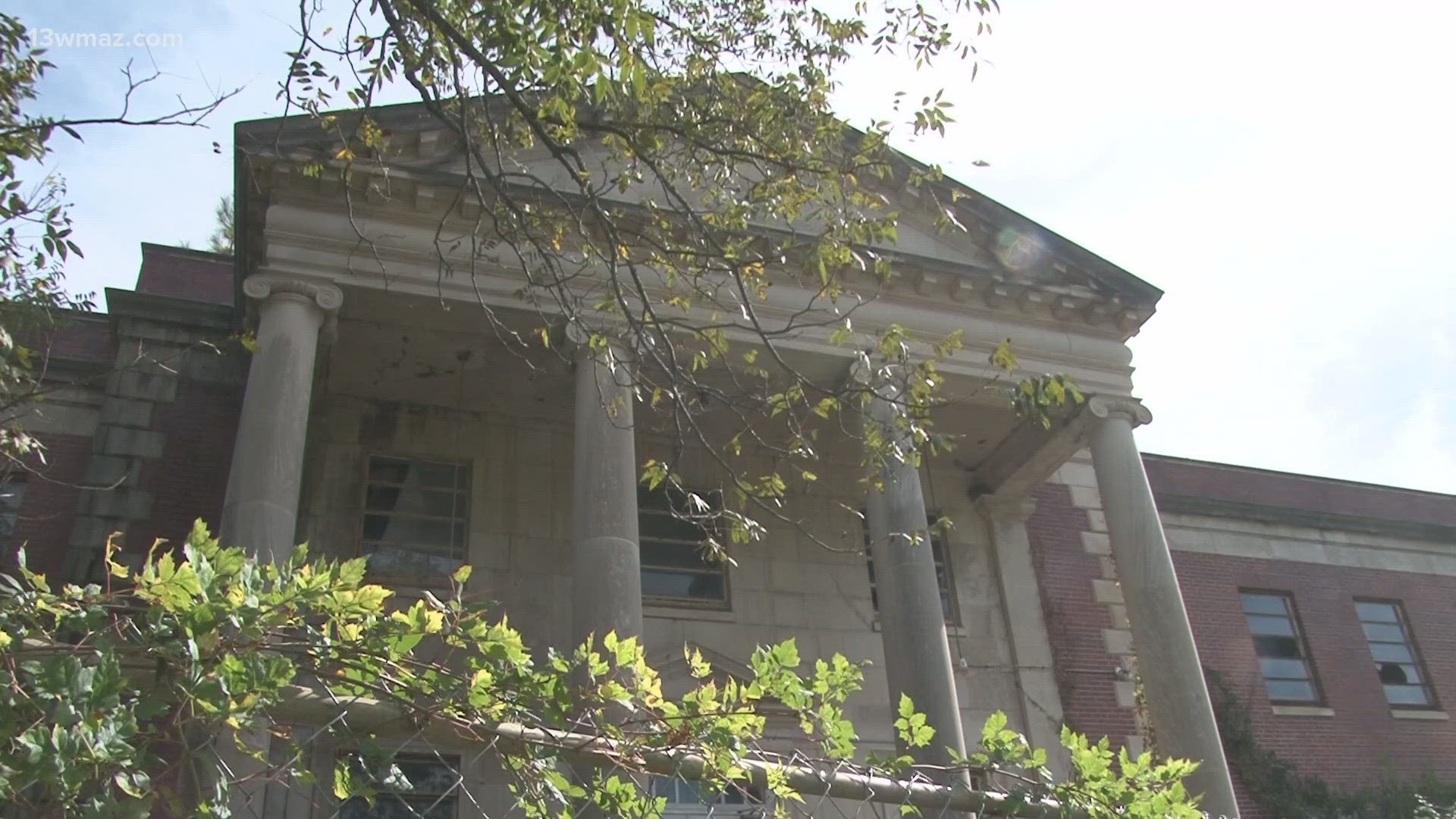MILLEDGEVILLE, Ga. — It’s had many names. The State Lunatic Asylum, The Georgia State Sanitarium, The Milledgeville State Hospital, and finally Central State Hospital.
The campus opened in 1842 becoming the world's largest mental hospital. The state closed it officially in 2010 and now some of it will disappear.
In July, Governor Brian Kemp signed an executive order to demolish three buildings on campus: the Green, the Jones, and the Walker building.
Former interim Executive Director of the Central State Hospital Redevelopment Authority says the state Green Building is a shame. But not just because of the broken windows.
“It's a shame that such a historically significant and architecturally significant building has been left to the elements,” Walter Reynolds said.
Reynolds says the place runs in his DNA.
“I'm actually the fourth generation of my family to work on this campus,” Reynolds said. “My great-grandfather worked in the steam plant, both of my grandmothers were nurses, my great-uncle was the photographer for the campus, and both of my parents worked with the Department of Corrections.”
He says the Green Building is just one piece of the hospital's history.
“It was actually one of the first buildings completed immediately following the Second World War. This would've been open around 1946 and it served as a patient dormitory,” Reynolds said.
He says it was named after the hospital's second superintendent, Dr. Thomas Green.


“They really put an emphasis on making sure the people weren’t unnecessarily restrained or otherwise limited in their ability. They really wanted people to act as normal as possible and really enjoy a quality of life here,” he said.
For around 12,000 patients on campus, there were large dorms, bunk beds, showers, and activity spaces.
“For patients to come and go with relative freedom,” he said.
However, between the 1960s and the 90s, Reynolds says there was a move towards deinstitutionalization.
The U.S. Supreme Court ruled people could not be confined just because of a mental illness.
"So, the state was beginning to get out of the mental health care business at that point,” Reynolds said.
Although the building was briefly used in the 90s by the Baldwin School District to teach Head Start, the number of patients decreased and the wings were closed.
“30 years on, there's been no serious maintenance effort for this building,” Reynolds said.
Water damage, decay, graffiti, vandalism, and asbestos have taken over the building.
Reynolds says it's a shame.
“There were so many people that walked these halls. The state had let this go on so long that this building is practically beyond salvage."
Now, he says it's a shame to tear it down because it was once great.
“These tell the story of not only Central State Hospital but Milledgeville as the former capital city. It tells the story of so many individuals who were touched by the mental health care system in this county. Building demolition is a travesty because it means we failed to do something in time,” Reynolds said.
On Monday, 13WMAZ spoke with the State Department of Behavioral Health and Developmental Disorders, who own the buildings.
They said their next step is to talk to the Georgia Department of Community Affairs' Historic Preservation division, which is required in the demolition order regarding historic preservation.
They said they will not be moving forward with demolition until they get recommendations back.
Reynolds says if you're concerned about the preservation of Central State Hospital's campus, he encourages folks to reach out.
If you'd like to learn more about the buildings and join the community surrounding the campus, the Friends of Central State Hospital Facebook group has almost 12,000 followers.

